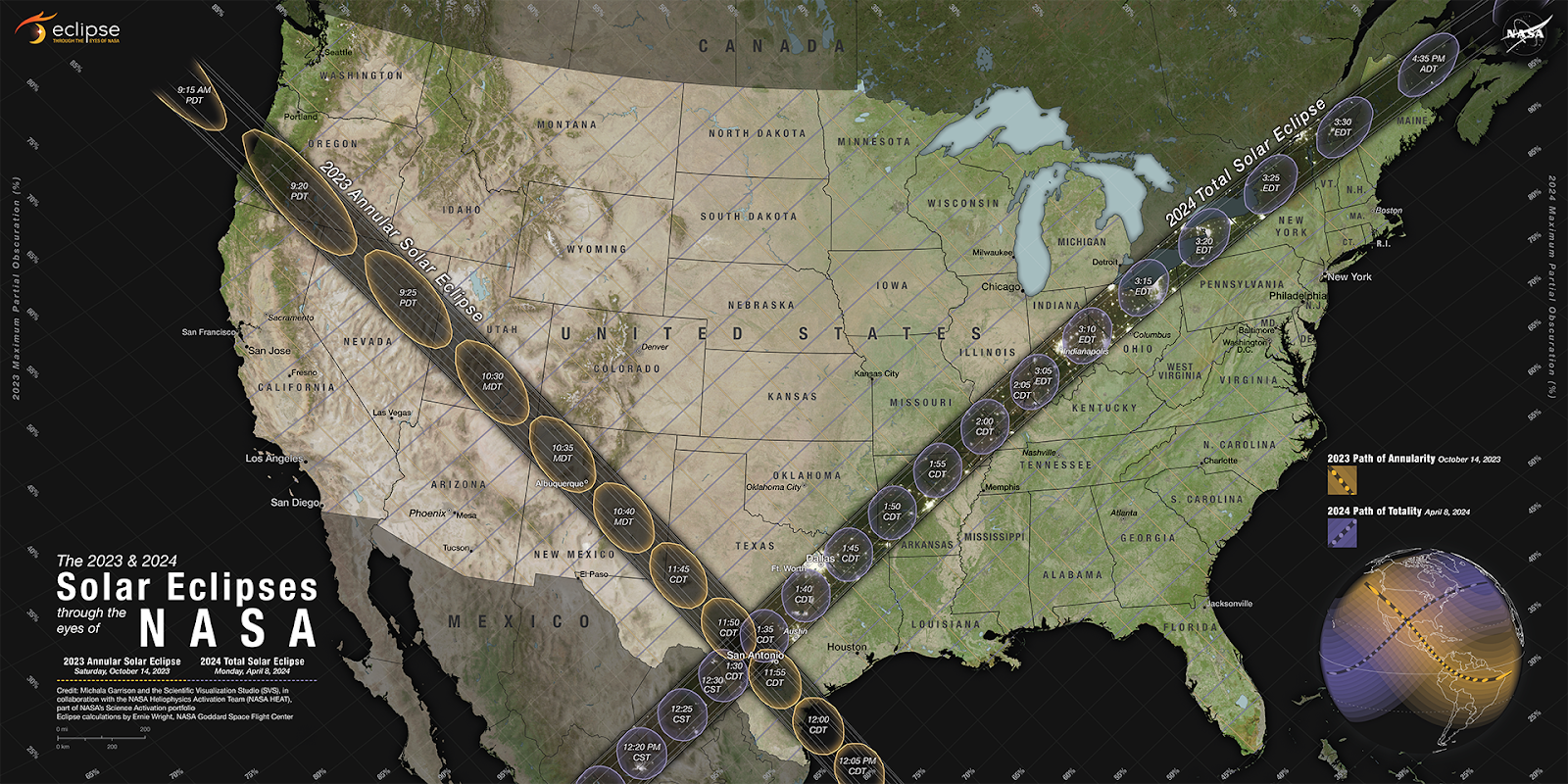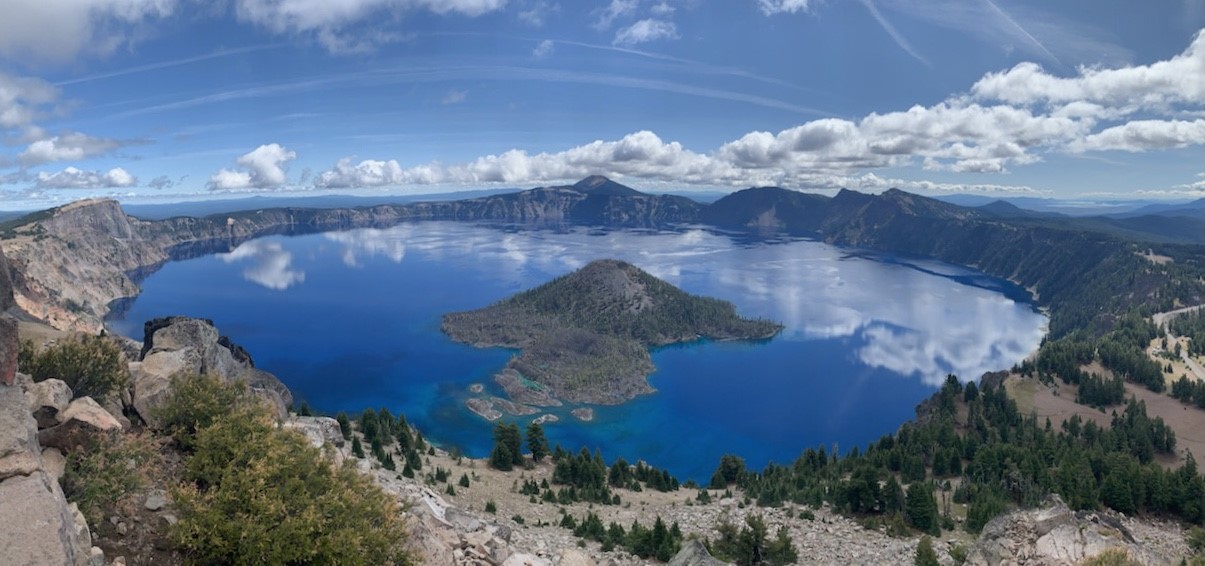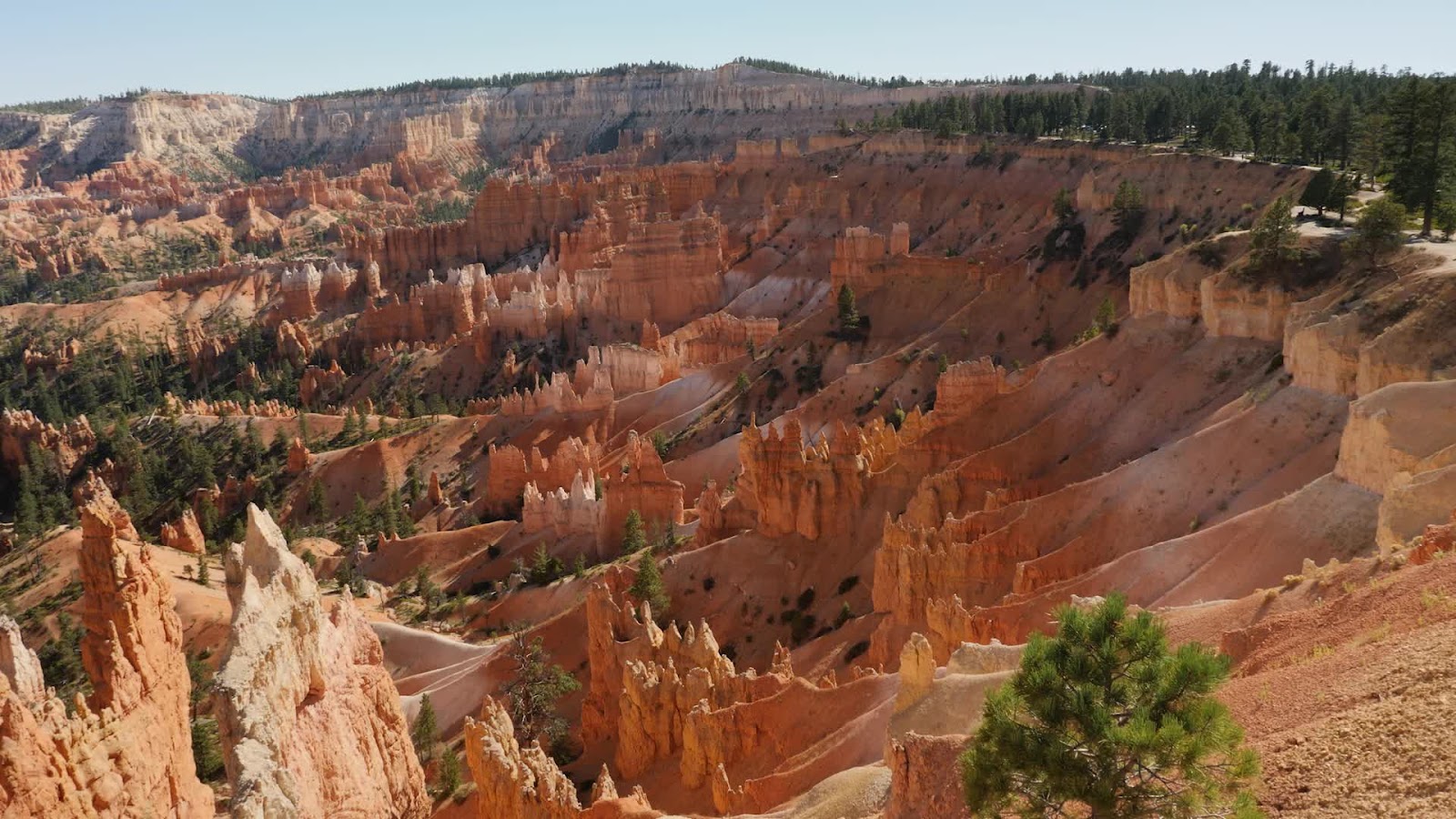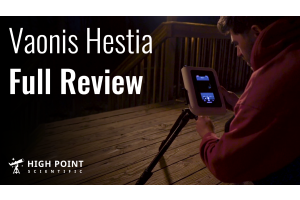
Get excited! On October 14, 2023, a solar eclipse will be visible over the United States for the first time since 2017. However, unlike the 2017 eclipse, this eclipse will be an annular eclipse (also known as a “ring of fire” eclipse).
The path of annularity for the October 14, 2023 eclipse will begin in the Pacific Ocean and pass through parts of Oregon, California, Utah, Colorado, New Mexico, and Texas before crossing into the Gulf of Mexico. If you’re in that path, you should be able to find a great view of this exciting event. If you need some help deciding where you should get set up, we’ve gathered four of the best places to observe the annular eclipse.

Image Credit: NASA’s Scientific Visualization Studio (https://svs.gsfc.nasa.gov/5073)
Total vs. Annular: What’s the Difference?
An annular solar eclipse and a total solar eclipse are both awe-inspiring celestial events that occur when the Moon passes between the Earth and the Sun, but they differ in some key ways.
- Appearance: During a total solar eclipse, the Moon covers the entire disk of the Sun, resulting in a darkened sky and the appearance of a glowing halo or corona around the Sun's perimeter. In contrast, during an annular solar eclipse, the Moon does not completely cover the Sun's disk but instead leaves a ring, or annulus, of sunlight visible around the Moon's edges.
- Duration: The duration of a total solar eclipse varies depending on where you are within the path of totality, but it typically lasts for a few minutes at most. In contrast, annular solar eclipses last longer, as the Moon takes longer to traverse the Sun's disk since it does not completely cover it.
- Visibility: Both annular and total solar eclipses occur about two to four times a year, with each type of eclipse visible from a narrow path across the Earth's surface. However, annular solar eclipses are visible from a broader area, as the path of annularity is wider than the path of totality.
- Brightness: During a total solar eclipse, the Sun is completely blocked by the Moon, resulting in a dramatic drop in light levels. This can cause the sky to appear as if it were nighttime, and stars may be visible in the sky. This causes some to compare the effect to a 360-degree sunset. During an annular solar eclipse, however, some sunlight still reaches the Earth, so the sky remains brighter, and it is not as dark as during a total eclipse.
What Can I Expect To See?
Each solar eclipse is unique, but we do have the tools to simulate what you can expect a particular eclipse to look like. At the peak of the October annular eclipse, 90.17% of the Sun will be covered, leaving us to view a "ring of fire". Take a look at the image below, on the left you'll see the sun as it usually appears, on the right you'll see a simulation of how the sun will appear when it's 90.17% covered.

Image Credit: Stellarium
The Best Places to Observe the Annular Solar Eclipse
As the excitement builds for this astronomical event, many people are already planning their trips to prime viewing locations. This article will feature our four favorite locations to witness the awe-inspiring beauty of the annular solar eclipse in the United States. However, before you pack your bags and head out to these locations, it's important to remember that weather conditions can greatly impact your viewing experience. Be sure to check the weather forecast before making your final decision on the best spot to view the eclipse. Choosing a location with clear skies and minimal cloud cover can make all the difference in your ability to witness this incredible phenomenon. You may also want to prepare for increased traffic conditions before and after the eclipse (although not quite as severe as it would be for a total solar eclipse).
4. Crater Lake National Park

Image Credit: National Park Service / Kim Chamales (https://www.nps.gov/crla/learn/nature/crater-lake.htm)
If you viewed the August 2017 solar eclipse, a lot of these locations may be familiar to you. The August 2017 and October 2023 solar eclipses share a common path across the United States, with both passing through several of the same states and regions, including crossing the coastline over Oregon. Crater Lake National Park should be a fantastic place to observe the annular solar eclipse while enjoying a family outing to the park. Camping at Crater Lake during the annular solar eclipse in October 2023 provides an unparalleled opportunity to witness the ring of fire eclipse against the backdrop of the park's beautiful lake, creating a truly unforgettable experience. However, closer to the coast, you may experience increased possibilities for cloud cover.
3. Corpus Christi, Texas

Image Credit: VisitCorpusChristi.com https://www.visitcorpuschristi.com/beaches/locations/north-beach/
If you’re not interested in putting up with cold weather, you may wish to view the eclipse somewhere warmer in October. Looking to make a beach trip out of the experience? Then the Gulf Coast is a great place to view the annular solar eclipse. Local beaches such as Mustang Island State Park, Padre Island National Seashore, and Port Aransas offer fantastic vantage points to view the eclipse with the Gulf of Mexico as a stunning backdrop. Visitors can also check out local events and activities organized by the city to celebrate the eclipse, making for a fun and memorable experience. However, you may also be threatened by pesky cloud cover as a result of proximity to the warm, humid air near the Gulf Coast. Keep your eyes peeled for any watch parties in the area!
2. San Antonio, Texas

A little further inland in Texas (where there is less likely to be cloud cover), San Antonio offers a great viewing location for this annular solar eclipse. Being a larger city, you’re more likely to find space on short notice through an AirBnB or hotel, while being able to watch the eclipse at a local viewing party. VisitSanAntonio has created a website on viewing parties for the solar eclipse (although as of writing this article, nothing has been posted just yet, so check back closer to the eclipse).
1. Bryce Canyon and Grand Staircase-Escalante National Parks

Image Credit: National Park Service https://www.nps.gov/brca/index.htm
Looking for a beautiful place to see the annular solar eclipse that has a relatively low chance of cloud cover? Check out Bryce Canyon National Park and nearby Grand Staircase-Escalante National Parks! Both of these two beautiful parks are located directly in the path of the annular eclipse in Utah. In addition to exploring the parks for a fun family adventure, should you choose to camp here, you may also get to enjoy beautiful nights of stargazing under the low light pollution sky. In October, the Milky Way is just beginning to set after sunset. However, it’ll be putting on a full show! Camp out under the stars, and enjoy a beautiful solar eclipse the next day for a full cosmic adventure.
Safely Viewing and Imaging the Annular Eclipse
Observing an annular eclipse requires the use of specialized eye protection, as looking directly at the Sun can cause serious eye damage or blindness. And unlike during a total solar eclipse, it’s unsafe to remove your eclipse glasses at any point. Even during an annular eclipse, the Sun's rays are still intense enough to cause harm to the eyes.
The safest way to view the eclipse is through specially designed solar filters or eclipse glasses that meet the ISO 12312-2 international standard for solar viewing. For more information on solar eclipse glasses, take a look at our article detailing how you can observe the sun safely.

For those interested in photographing the eclipse, it is important to use specialized solar filters for cameras and telescopes. Attempting to photograph the eclipse without the proper equipment can lead to serious damage to both the camera and the eyes. Generally speaking, if you're planning on photographing a solar eclipse, you'll probably want a portable setup that's capable of tracking the sky during the eclipse, as it enables you to take your equipment with you on a plane, or quickly relocate in the event of clouds. The Sky-Watcher SolarQuest Alt-Azimuth Solar Mount is a great portable solar mount. This lightweight, highly capable mount comes with a built-in GPS and Helio-Find technology that can automatically locate the Sun in the sky. Additionally, the mount comes with a payload weight of 11 lbs, enabling you to use a smaller telescope like the Apertura 60EDR, the Coronado PST Personal Telescope (great for partial and annular eclipses), the Sky-Watcher Skymax 90mm, and many others. We strongly recommend checking out our article on How to Photograph a Solar Eclipse for some of the best ways to image this annular eclipse.
You can also check out our livestream of the Annular Solar Eclipse on October 14, 2023 on the High Point Scientific YouTube channel!

Learn More
Interested in learning more about solar and lunar eclipses? Not sure where to begin? Check out our Astronomy Hub!





















